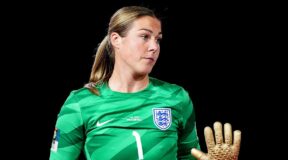Perched atop the Mets’ bench, back to the wall of the home dugout, Steven A. Cohen peered through the cameras and notepads in front of him on Friday morning. His new scoreboard was out there, 17,400 square feet of LED brilliance, practically a sixth borough of New York City.
Every king needs a castle befitting his stature, and Cohen, baseball’s wealthiest owner, is having fun with Citi Field.
“What I want to do is create a master plan,” Cohen said on the eve of the Mets’ home opener. “I don’t want to create a renovation of the stadium where everything doesn’t really tie together.”
Cohen has remade the Mets into a luxury brand, so of course they now have the largest scoreboard in the majors. The team’s record payroll — roughly $370 million, plus another $100 million or so in luxury taxes — has coincided with a spiffier ballpark, with new flourishes big and small: a 100-seat, field-level club in right; a tequila bar above center; a disc honoring Bob Murphy, the Hall of Fame Mets broadcaster, on the roof above left.
The World Series flags have been redesigned, too: The two championship banners are still white, but the three National League banners are now blue. The only ode to last season is a 2022 notation on an “N.L. Wild Card” placard above section 504. All about action. Major League Baseball is implementing some of the biggest changes in the sport’s history in an effort to speed up the game and inject more activity. Here’s a look at some of the new rules taking effect this season: Pitch clock. The biggest change is the creation of a pitch clock. Pitchers will have 15 seconds to begin their motion with the bases empty and 20 seconds with a runner on. If they don’t, they will be assessed a ball. Batters not in the box by the eight-second mark will receive a strike. More pace-of-play changes. A pitcher is limited to two disengagements, such as a pickoff attempt or step-off, per plate appearance. A third will result in a balk. There will be a 30-second clock between batters and a 2-minute-15-second inning break during regular-season games. Defensive shift ban. All four infielders must have both feet on the infield dirt or grass when the pitcher begins his motion, and each team must have two infielders on each side of second base. A violation results in a ball, or the batting team can let the play stand. Bigger bases. With the goal of decreasing collisions at first base and stimulating more infield hits and stolen bases, all three bases were increased to 18 inches square from 15. That will reduce the distance between first and second base, and second and third, by 4.5 inches. Why make these changes? Baseball has been criticized for having long games without enough action. In 2021, an average game set a record at 3 hours 11 minutes — the average was 2 hours 44 minutes in 1985. Hits per game were near historic lows while strikeouts were higher than ever. Will the new rules work? M.L.B. found that the use of a pitch clock in the minors shortened the average game by 25 minutes. Overall, the league saw a slight increase in batting average, a larger one in stolen base attempts, a notable decrease in injuries and a smaller decrease in strikeouts. Last season’s swift playoff exit, after 101 regular-season victories, was not part of Cohen’s master plan. Neither was the presence of Tylor Megill on the mound for the home opener; a free-agent prize, Justin Verlander, was lined up for the task, but shoulder inflammation has limited him to playing catch. “Very mild,” Verlander said of the injury, “but I do still feel a teeny bit of something.” Verlander expects to be back before the end of April, which is really just as well. The Mets need him and their other $43.3 million-per-year veteran, Max Scherzer, to be strong and sturdy in October. The next six months are a preamble, and Friday was encouraging: a 9-3 victory over the sloppy Miami Marlins. This was baseball in the pitch-clock era: Even with 18 strikeouts, 16 walks and 11 pitchers, the game lasted only 3 hours and 1 minute. In recent years, it would have been interminable. “The ball’s slick this time of year; we saw it from the other side,” said the Mets’ Brandon Nimmo, who did his sprint-to-first-on-a-walk routine four times. “But Tylor was able to fill up the zone, get strikes and get them to chase.” Megill was scheduled to be the ace for Class AAA Syracuse until Verlander’s late-March setback. He was 4-0 in five starts last April but never won again, his season sidetracked by shoulder strain. Now he has two of the Mets’ four victories — and a little more luck. In the fourth inning on Friday, a comebacker from Jean Segura caromed off Megill and into right field for a single. Thankfully, Megill said later, the ball struck him in the perfect spot — the top of the foot — and he stayed in to blank Miami for six innings, saving his only curveball for a final-pitch strikeout of Jazz Chisholm Jr. The Mets had seven walks before recording their first hit — an infield single by Daniel Vogelbach, the designated hitter — but soon the home runs were flying: Starling Marte, Francisco Lindor, Pete Alonso. As adventurous as the Mets’ seasons usually are, they tend to start smoothly: The team is now 41-21 in home openers, including 11-4 at Citi Field. This opener came with a preview of coming attractions, if only in the introductions. Because of a calf injury to catcher Omar Narvaez, the Mets promoted Francisco Alvarez, their top prospect, on Friday morning. Alvarez, 21, will see time behind the plate, but Tomás Nido seems likely to get more starts. “It’s kind of like a backup quarterback that gets drafted out of college,” Manager Buck Showalter said of Alvarez. “Everybody knows he’s going to be a really good player, but the time he spends as a backup is very valuable, too. Tomás is pretty good.” Nido led off the fourth with a single and rumbled home from second on Alonso’s single to left. Every Met in the lineup — except for third baseman Eduardo Escobar — reached base via hit or walk, and while the weather was raw and gusty, the day delivered what the 43,590 fans wanted. The only downer, alas, was the Mets’ tacky new advertising patch, which is not quite the size of the scoreboard, but close. Cohen would not say how much money the Mets are getting for selling sleeve space to NewYork-Presbyterian Hospital, but he conceded that their red-and-white colors must go. “I had an email exchange with the C.E.O., Steve Corwin, and we agreed to change the patch already,” Cohen said. “They’re Phillie colors, and he and I agreed that it should be more Met-appropriate.” For now — and, really, in any iteration — the patch is a stain on the Mets’ otherwise clean, sharp home jersey. You might call it a pimple, the word Lindor used when asked for his thoughts on the scoreboard. With such an enormous screen to beam his face to the crowd, Lindor explained, he’ll have to take better care of his skin. “I’ve got to eat less chocolate now,” he said, smiling as he held his 2-year-old daughter, Kalina, who was eating a chocolate ice cream bar. Lindor stole a lick and laughed. On a day for a happy homecoming, a small indulgence was just fine. Source: Read Full ArticleWhat to Know About M.L.B.’s New Rules









